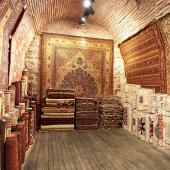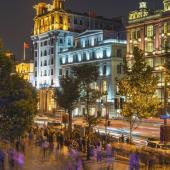Montebello Design Centres Cape Town
artist ritual made its way to South Africa interviewing Tessa, Philip and Ulrich, the heads behind the Montebello Design Centre in Cape Town. We not only took a magical interview but also indulged ourselves in the magic of the Montebello Design Centre, where its special magic comes about with dreaming. Convince yourself, it´s worth it!
artist ritual: Thank you, Tessa, for allowing me to interview you today. I am very happy to be here. How and when did you come up with the idea of establishing an artist colony here in Cape Town?
Tessa: In fact, it was not my idea. It was the idea of a man who was the son of a German South African Maximillian Michaelis. He lived in Papenboom Estates what you can see behind you, on this property in Montebello. It was a much larger property, it is now subdivided. He was one of the few small handful of men in South Africa who made a lot of money out of gold and diamonds. So, in South Africa, we call them Mining Magnates. His legacy to South Africa was that he was concerned with the finance. So, he donated a collection of artworks to the nation, which is now housed in the center of Cape Town in Green Market Square in a building that was once the old townhouse. It is called the Michaelis Collection. He also supported the University of Cape Town with money to start a fine art department. That department is called the Michaelis School of Fine Art. As you can gather, his surname was Michaelis. His son Cecil Michaelis also wished to leave a legacy to Cape Town. He decided to have a rather contemporary take on it, so he focused on the applied arts, rather than on the fine arts. His real interest was design. Actually, he was a very forward thinker for his time because he saw design as a type of a new emerging currency that could make a real contribution by honoring the South African context regarding the indigenes traditions we have, and also by bringing in certain design inventions by adapting those indigenous traditions to products that could be saleable on the export market having an appeal beyond its traditional use. So, to that end, he donated this property where we are sitting now which is the leftover portion of Montebello that was not appropriated by the government 50 years ago. He donated this to the University of Cape Town. An attached condition to the donation was that it needed to be used whichever way his board decided would further support design and art in South Africa.
artist ritual: Philip, I am going to ask you this question. What does the Montebello Design Center offer to its audience?
Philip: Well, as you can see we are sitting here under the trees at a wonderful restaurant called the Gardener´s Cottage, to enjoy some breakfast. It´s a very key element to any good museum or any good experience that is a place to sit down, talk and actually take in all the things that you´ve seen. It´s an attraction for people to come to on a regular basis. So, we do have quite a core of people who come for the Eggs Benedict. But, there are lots of good reasons for being here. First of all, Montebello has got a craft shop that specializes in craft from all over South Africa and other African countries. The idea is to promote good fine craft for people regarding what is available on the South African market. Then there are other studios where we can visit artists, crafters and designers working in individual spaces. You can communicate with those people and you can see the sort of work they are doing. There is a very serious art element behind it. As far as the visitor is concerned, you enter a very interesting historic space. Where we are sitting, is the Gardener´s Cottage which used to be the gardener´s cottage, and is now the restaurant. In the stables, where you can still see the base where the horses were, there is now a fine craft center which has craft products and books on South African craft. We had the wonderful approach of bringing this craft into the 21st century. There are all kinds of places that you can interact with and see, buy and have a very special South African experience by coming here. Behind that all, there is a very strong sense of design, and where can take us design in the future. So, for instance, one thing you did mention was the Glass House and the Nursery and what´s behind it. That is another story we need to talk about.
artist ritual: Ulrich, you offer the so-called D-Desks, at which design ideas are being developed. Who makes most use of this amazing offer?
Ulrich: So, as Philip mentioned before, the special magic of this place is in dreaming and I think it’s one of the skills that in society, we seem to have lost now, and what we practice in the D-Desk is a discipline called Design Thinking. So, what has happened – and that Philips talk refers to – it´s about the underlying principle of this space, there is the craft of designing physical objects, and then there is the craft of Design Thinking, which is the principle behind lot of the activity that you see here. The D-Disk offers design thinkers, such as myself and my colleagues that are on the D-Desk, to imagine new solutions. It´s a kind of that – and Philip referred to it – the discourse of innovation is very technology-centered, and it’s dictated out of Silicon Valley, and it´s all about robots and machines and etc. I think the African narrative innovation around is a more people-centered narrative. We hope to contribute with an alternative vision of where design and Design Thinking can contribute to new solutions new ways of thinking that are less about technology, because this is a place you come to slow down, to reflect, to switch off your phone and to consider a dream of a better world. Or, maybe also an African view of the future and I think the first would narrate and we are all participating in its “designing for someone”. So, the designer is the guru, but in Africa we say “design with”. So design here is more about co-creation and not about imposing your view on the people you are designing with. And, at the D-Desks we have various experiments going on. We use Design Thinking to re-imagine industries, services, systems, products - so we work on a kind of taking a conceptual idea, prototyping it, incubating it and maybe launching it to the market to show the African narrative of our vision in an intangible way.
artist ritual: African art is on the rise worldwide. How do you consider African art in the global context?
Tessa: The idea of African art being on the global rise is an interesting one and not only a contemporary one. Because there have been periods through art during the centuries, and certainly in the 20th century, where African art made a big contribution to some of the major art movements. Picasso was greatly influenced, for instance, by African art. And so were a number of other people who were contemporaries of Picasso. What we would like to see, what is different now, that we would like to see here an emergence of African artists contributing to the dialogue of African art, rather than European artists taking the excitement of African art and creating new European movements out of that.
Philip: Yes, if I can add that. Tessa is really right, because people have been talking about Africa or taking elements of African art and using it I think there’s something fundamentally different about the current resurgence of African art in that. If you think about the famous German collector, which gave us that big museum at the Waterfront, he’s been collecting African art and stimulating emerging African artists for a while. If you go to the site´s museum, most of the artists they are in their early twenties, so he has deliberately also showcased a new generation that needs to find its own voice. I think that is more encouraging now that there is real a intent to stimulate new emerging African artists to tell their own stories about this continent and where it is going. And, I mean, that´s the kind of way I think. Currently, we have more appreciation of the global art world to really engage with African artists, to try, to understand and listen more to African artists´ use and I think, obviously, on this continent, there are certain countries that are better represented than others are. I think it would be interesting to see a more pan-African arts movement actually finding a common voice. So obviously, Cape Town is one point where it crystalizes the conversation, but I think we need larger stages and platforms, to really talk about African art in the 21st century. This is one place where it happens. But, I think we’re seeing the beginning of a larger movement.
Tessa: One more little comment. Plyni, the Greek philosopher, famously said: “always something new out of Africa.” So, really, what is it about Africa that seems to have this great raw energy, this great ability to be vigorous and creative. There is a type of energy that comes from Africa that is contagious, and should inspire the real tragedy for Africa that it has always been. Very little comes back in to Africa.
artist ritual: What is behind "The Greenhouse Nursery"?
Philip: Part of the estate was a Glass House, which dates back I think to the turn of the century. It´s Victorian and it’s one of the only existing Glass Houses in South Africa. Obviously, the Glass House wasn´t built as a long-term structure. But, it is an excellent example of industrial design of that time. And the Glass House has also been used by the nursery for quite a long period. But, recently, it’s structurally insecure and unstable so we had to re-think how we can preserve and maintain. And of course it´s a whole process with the Heritage Western Cape working on what is the best way of taking it forward. How much of it can be preserved, and Heritage Western Cape has very strict guidelines. You don’t want to just create a Disneyland thing out of it.. So, we are looking at ways of also using that - because it is a metaphor for what Montebello Design Center is all about. One of our vision statements is that we are “a cool place for hot ideas”. That we are an incubator for design concepts. This is a place where we “seed good thoughts and make them grow”. So, we´d like to use the Glass House as a metaphor for doing all of that. Taking design not from where it was, but into the 21st century. When we look at the Glass House, we are looking at paying tribute to what it was. But also, what is glass all about in the 21st century? Even looking at new kinds of glass, and how we can use it and also create an area which is yes, - partly a nursery -, but maybe an exhibition area, a conference place. But, it’s not a huge area, probably about 80 square meters. How much is it in square meters? (asking Tessa)
Tessa: The existing Glass House is about 80 square meters. And the idea is to double the size for function workshops, exhibitions to give expression to the idea of our new vision statement, which is that we merge the dreams to grow new ideas from Africa.
artist ritual: You also offer creative workshops in various art forms. Which art forms are the most demanded ones?
Tessa: At Montebello, surprisingly, we have about actually 24 studios. That is how many leases wehold with different tenants at Montebello. It seems remarkable when you look around where they are all hidden. But, they are in every locking cranny. Those are studio spaces. They all make or think about design, those studios. Quite a number of them also teach. And there are various teaching programs. Some of them are very popular because they take many different forms. For instance, we have one studio that is working with early learning development with children. And it also has a number of other sites off-site of Montebello in township areas experimenting with new ways of teaching early-learning with small children through creative processes. Basically through art and creative processes. Pottery has always been very popular in Montebello, and there always have been pottery classes. Quite often, when I come to Montebello at night, it´s busier than during the day, it´s quite a magical place at night. A lot of classes are going on in jewelry, in pottery, in painting, in drawing, in print-making. So, over the years, there have been a great variety of classes offered to the public. The current brochure that I have just given to you will detail the current workshops and classes that are currently beeing offered this year. But, it changes over the years.
artist ritual: Thank you Tessa, Ulrich and Philip so much for allowing me to conduct the interview with you.
All: Thank you so much, it was a pleasure.




